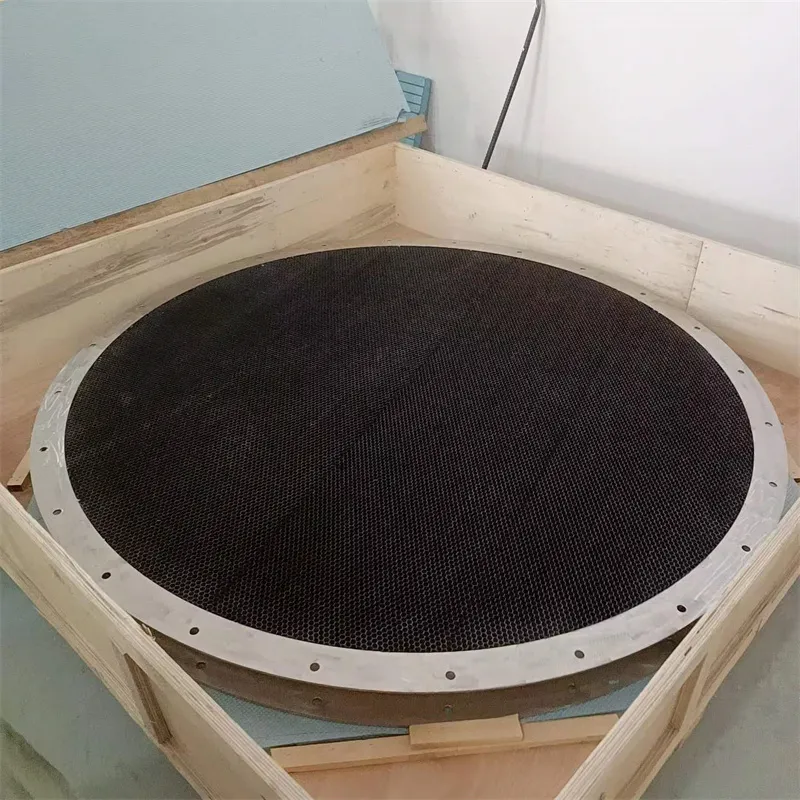
- Afrikaans
- Albanian
- Amharic
- Arabic
- Armenian
- Azerbaijani
- Basque
- Belarusian
- Bengali
- Bosnian
- Bulgarian
- Catalan
- Cebuano
- China
- China (Taiwan)
- Corsican
- Croatian
- Czech
- Danish
- Dutch
- English
- Esperanto
- Estonian
- Finnish
- French
- Frisian
- Galician
- Georgian
- German
- Greek
- Gujarati
- Haitian Creole
- hausa
- hawaiian
- Hebrew
- Hindi
- Miao
- Indonesian
- Italian
- Japanese
- Javanese
- Malay
- Persian
- Portuguese
- Punjabi
- Russian
- Spanish
- Swahili
- Telugu
- Vietnamese

emi rfi shielding
Understanding EMI and RFI Shielding An Essential Guide
In today's technologically advanced world, electronic devices are ubiquitous, and their functionality relies heavily on the seamless transmission of signals. However, as devices become more prevalent, the interference from electromagnetic interference (EMI) and radio frequency interference (RFI) poses significant challenges. EMI and RFI can disrupt the operation of electronic equipment, leading to malfunctions, degraded performance, and even complete system failures. To combat these issues, EMI and RFI shielding have emerged as critical components in the design and manufacturing of electronic devices.
What is EMI and RFI?
Electromagnetic interference (EMI) refers to the disruption caused by electromagnetic fields generated by electronic devices or natural sources, such as lightning. EMI can manifest as noise, erratic behavior, or failure of electronic circuits. Radio frequency interference (RFI) is a subset of EMI that specifically pertains to the disruption caused by radio frequency signals, often originating from communication devices like radios, televisions, and cellular phones.
Both EMI and RFI can impact a wide range of applications, from consumer electronics to sensitive medical equipment. For instance, in hospitals, the performance of life-saving devices can be compromised by interference from mobile phones or radio equipment, highlighting the need for effective shielding solutions.
The Importance of Shielding
Shielding is an effective method to protect electronic devices from the adverse effects of EMI and RFI. By creating a barrier that absorbs or reflects these unwanted electromagnetic signals, shielding can enhance device performance and reliability. There are several reasons why shielding is crucial in electronic design
1. Compliance with Regulatory Standards Many countries have stringent regulations governing electromagnetic emissions from electronic devices. Shielding helps manufacturers meet these standards, ensuring that products are safe and reliable for consumers.
2. Enhanced Performance Shielding reduces the noise levels in electronic circuits, thereby improving overall system performance. This is particularly vital in applications requiring high precision, such as medical instruments and aerospace systems.
3. Reduced Risk of Malfunction By minimizing interference, shielding protects critical components within devices, decreasing the likelihood of malfunction or failure due to EMI or RFI.
Types of Shielding Materials
There are various materials and methods used for EMI and RFI shielding, each with its unique properties and applications. Common materials include
emi rfi shielding

- Conductive Metals Metals like copper, aluminum, and steel are widely used due to their conductivity and effectiveness in reflecting electromagnetic waves. They can be shaped into enclosures for devices or used as coatings on circuit boards.
- Conductive Fabrics These fabrics combine textile properties with conductive materials, making them ideal for flexible applications. They are often used in wearable electronics or portable devices.
- Carbon-based Materials Emerging technologies are introducing carbon-based materials such as graphene, which offer lightweight and highly effective shielding properties
.- Metalized Plastics These materials offer a balance between weight and shielding effectiveness, commonly used in consumer electronics and automotive applications.
Shielding Techniques
Implementing effective EMI and RFI shielding can involve various techniques, including
- Enclosures Fully enclosing electronic devices in a conductive material creates a Faraday cage effect, providing excellent protection against external interference.
- Gaskets and Seals Utilizing conductive gaskets at the junctions of enclosures helps to maintain an uninterrupted shielding environment.
- Shielded Cables Using cables with built-in dielectric and conductive layers can prevent the emission or reception of unwanted signals.
- Grounding Proper grounding of electronic devices enhances the effectiveness of shielding by providing a path for excess electromagnetic energy to dissipate.
Conclusion
In an era where electronic devices are integral to everyday life, understanding and addressing the challenges posed by EMI and RFI is paramount. Effective shielding is not merely an optional aspect of electronic design; it is essential for ensuring compliance with regulations, enhancing device performance, and safeguarding against potential malfunctions. As technology advances, innovations in materials and techniques for EMI and RFI shielding will undoubtedly evolve, continuing to play a vital role in the reliability and functionality of electronic devices across various industries.
Products categories
-
Why Vented Aluminum Honeycomb Is Leading the Way in Shielding and Ventilation SolutionsNewsJul.18,2025
-
Why Stainless Steel Honeycomb Panel is the Ultimate Choice for High-Tech Shielding and ProtectionNewsJul.18,2025
-
Why Honeycomb Strips Are Revolutionizing High-Speed Sealing SolutionsNewsJul.18,2025
-
Shielded Glass Innovation Powers the Future of Electromagnetic ProtectionNewsJul.18,2025
-
Precision Starts Here: Revolutionizing Airflow Control with Honeycomb Wind Tunnel SolutionsNewsJul.18,2025
-
Elevate Industrial Performance with Precision-Engineered Steel Honeycomb Core SolutionsNewsJul.18,2025
-
Vented Aluminum Honeycomb: A Smart Shield for Airflow and EMI ControlNewsJul.11,2025















